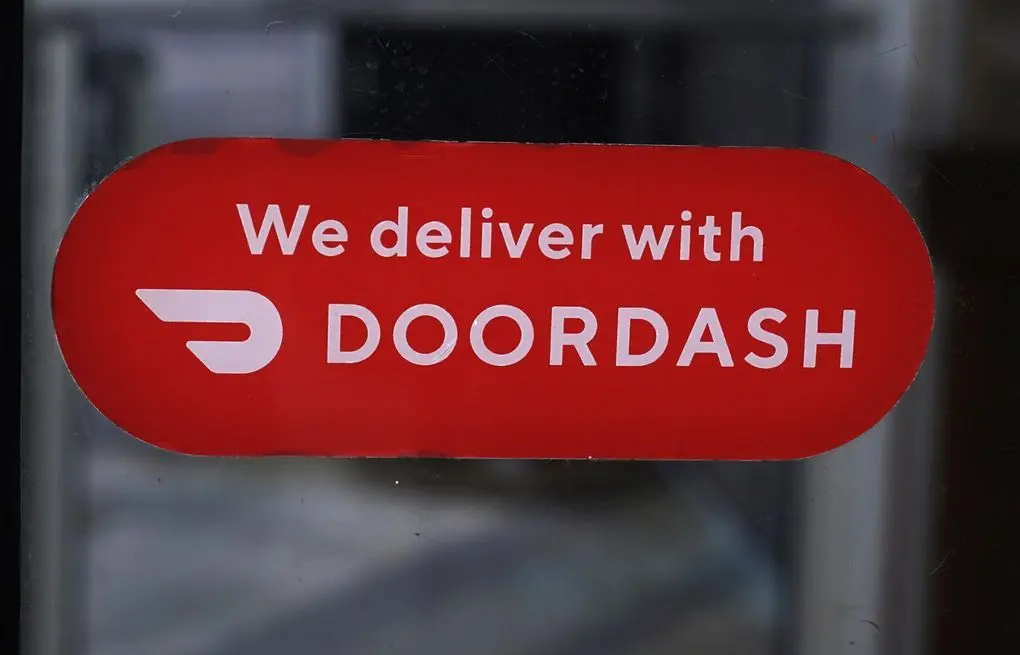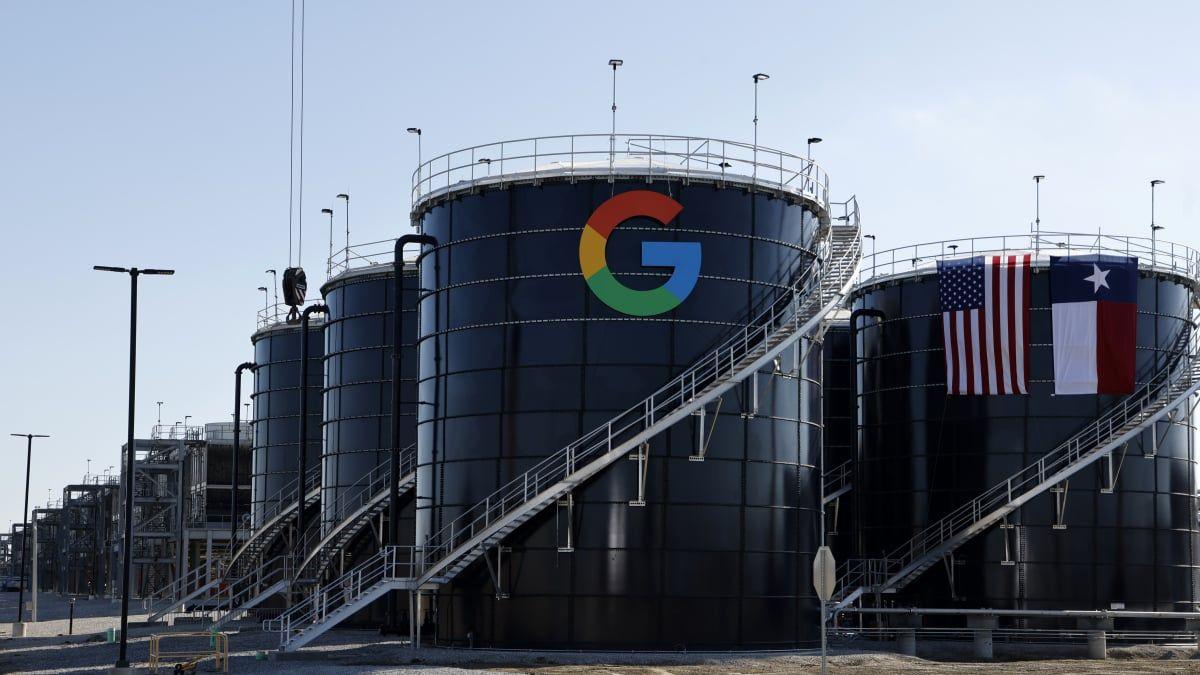DoorDash Unveils Dot: The Autonomous Robot Revolutionizing Food Delivery
2 Sources
2 Sources
[1]
DoorDash unveils Dot, its autonomous robot built to deliver your food | TechCrunch
On Tuesday, DoorDash unveiled Dot, a small robot it built in-house that can autonomously drive on roads, bike lanes, and sidewalks to deliver food and small packages at speeds up to 20 miles per hour. Dot is designed to look friendly and even cartoonish -- painted bright red, with big LED eyes and a mouth that swings open to reveal where it holds your food -- though I'd argue it's slightly creepy. DoorDash says it's already testing the robot with early access partners in the Phoenix metropolitan area, and plans to make it available to the region's 1.6 million residents by the end of 2025. It might sound odd for a food-delivery app like DoorDash to compete with trillion-dollar companies like Google and Tesla on autonomous vehicle (AV) technology. In San Francisco, Austin, and cities around the country, hailing a robotaxi is already commonplace for many residents. DoorDash argues that a similar reckoning is coming for the food delivery space, and that Dot's size and design are key. The stakes are high for this little, cute (terrifying?) robot. Countless startups have flamed out in the AV space, with some even facing penalties and fines when their machines caused harm. Robotaxis have also become a symbol for Silicon Valley's broader automation push -- and a target for public anger. Waymos have been vandalized on city streets, and it's easy to imagine Dots becoming the next symbol of that tension. On Monday at the company's San Francisco headquarters, DoorDash co-founder Stanley Tang told reporters that autonomous delivery in suburbs and cities could become a large market. Tang said a key to delivery robots is navigating "the first and last ten feet," referring to picking up and dropping off deliveries. Sidewalk robots, such as those developed by companies like Serve Robotics, address this challenge of negotiating tight spaces, but they can't drive on roads or at high speeds like Dot can. "You don't always need a full-sized car to deliver a tube of toothpaste or pack of diapers," said Tang. "Dot is purpose-built for the millions of deliveries we facilitate every day. It is small enough to navigate doorways and driveways, fast enough to maintain food quality, and smart enough to optimize the best routes for delivery." Dot has four wheels and stands less than five feet tall and three feet wide. It's roughly a tenth the size of a car and weighs 350 pounds. Press a button on what can only be described as Dot's "mouth," and enough cargo space is revealed to fit six pizza boxes or up to 30 pounds of food. There are various inserts that merchants can put inside of a Dot to meet their needs, including cupholders and coolers. There's also an LED strip on top of the vehicle to display text, and speakers that can emit a robotic voice. DoorDash says there's even a microphone on Dot, which could one day be used to facilitate AI-powered conversations between customers and Dot. Each unit runs on an interchangeable battery that can be charged separately. The company says this was a key design feature to decouple storage and charging of the vehicles. For navigation, Dot uses eight external cameras, alongside four radar and three lidar sensors to detect obstacles. DoorDash says the cameras are hooked up to a real-time AI model that combines deep learning and search based algorithms to find the best path to customers. The company has spent the last seven years building toward Dot. Back in 2019, DoorDash acquired the AV startup Scotty Labs, and brought on the co-founders of another AV mapping startup, Lvl 5. In 2021, the company hired Ashu Rege, a former executive at the Amazon-owned AV company Zoox, to lead its autonomy division. In an interview with TechCrunch, Rege says that DoorDash's early conversations with lawmakers regarding Dot have been positive. He says city and state officials have touted small vehicle delivery as a way to reduce traffic congestion. Human delivery workers may be less enthusiastic. In a press release, DoorDash says humans will still fulfill a vast majority of their daily orders, while automation will let some "focus more on the high-value orders that require human judgment and care." Another hurdle for Dot is safety. Rege says Dot is trained to be deferential to bicyclists and pedestrians, while being large enough to be visible to drivers. If a Dot runs into trouble on the road, Rege says Dots cannot be remotely operated by humans. DoorDash believes teleoperation isn't the right approach for Dot, and instead, trains it to simply wait and pull over to the side of the road (though that's easier said than done in some cases). Rege says a field operator will be dispatched to the Dot's location in serious circumstances. In Phoenix, DoorDash has created an ecosystem to support its small fleet of Dots: warehouses to store the robots, charging stations to fill up their batteries, and field operators to clean and rescue them. Rege declined to disclose headcount or costs for this ecosystem. Much like people have vandalized Waymos, it seems likely that people will try to mess with Dots. DoorDash says it included a camera inside Dot's cargo space, partially to ensure small humans don't climb inside. Dot is also light enough to be tipped over by a few people, but Rege says field operators can flip them back upright if that ever happens. While Dot may look playful, it's a serious and massive undertaking for DoorDash. The company would surely like to beat Uber and Instacart to market on autonomous delivery vehicles. Dot could reshape DoorDash's position in the delivery market, but it could also introduce a wide array of new challenges.
[2]
Blood-red bot stalks the burbs armed with... groceries
DashCam's autonomous vehicle may strike fear into the hearts... of delivery drivers Rise of the machines Machines may soon be taking over the mean streets of suburban America . . . in the form of Dot by DoorDash. However, it'll be groceries and take-outs that it delivers rather than justice. The autonomous robot has been built by DoorDash Labs, the delivery company's in-house automation and robotics developer. We're told it is set to travel on bike lanes, roads, side walks, and driveways, no matter the time of day or whatever the weather. The all-electric autonomous four-wheeled bot - which measures about one tenth the size of a car - can move at speeds of up to 32 kph, enough to outpace the average human. According to DoorDash, Dot's speed and size is designed for quick local deliveries - it isn't going to be making voyages across the country any time soon. It is intended to help reduce congestion and emissions on the roads. The look of the roving red robot might not strike fear into your typical meatbag (ED-209 it is not) unless they work as a delivery driver for DoorDash. The company says, however, that its legion of Dashers will always be essential; the Dot just augments the workforce. An early access program has already started in Tempe and Mesa, Arizona and the delivery biz wants to extend access to Dot to the rest of Phoenix by the end of this year. DoorDash said it sees "expansion into multiple new markets" in the future. "You don't always need a full-sized car to deliver a tube of toothpaste or pack of diapers. That's the insight behind Dot," said Stanley Tang, co-founder and head of DoorDash Labs. "Dot is purpose-built for the millions of deliveries we facilitate every day. It is small enough to navigate doorways and driveways, fast enough to maintain food quality, and smart enough to optimize the best routes for delivery," he added. With the large lights on the front seemingly designed to look like cartoonish eyes and the way Dot opens its Pac-Man style 'mouth' to receive and deliver items, the robot appears to have been designed to look as non-threatening as possible. Perhaps it is DoorDash Dot, rather than the people of America, who should be worried about safety. Caution is advised, however. Just as it is advisable to be courteous to AI chatbots, those with ill-intent toward Dot may consider that it one day may have a larger sibling able to crush human bone when the robot uprising begins. DoorDash Labs says that Dot is designed to react appropriately to "varied human behaviour." A video accompanying the launch shows the robot slowing down or stopping to avoid hazards like children, cute dogs, or soccer balls crossing its path. It uses lidars, radars, cameras, and other sensors to ensure 360-degree situational awareness and reaction to the environment as appropriate. If that fails, DoorDash has "remote operators" that can "step in to assist" as well as "a local operations team... on hand to resolve anything that can't be managed remotely." Phew. Unless, of course, you're a delivery driver with one eye on your new emotionless colleagues joining the workforce. ®
Share
Share
Copy Link
DoorDash introduces Dot, an autonomous delivery robot designed to navigate roads, bike lanes, and sidewalks. The compact, AI-powered vehicle aims to transform last-mile delivery in urban and suburban areas.

DoorDash Introduces Autonomous Delivery Robot
DoorDash, the popular food delivery app, has unveiled its latest innovation in the form of an autonomous delivery robot named Dot. This small, cartoonish-looking vehicle is designed to revolutionize the way food and small packages are delivered in urban and suburban areas
1
.Technical Specifications and Capabilities
Dot is a compact, four-wheeled robot standing less than five feet tall and three feet wide. Weighing 350 pounds, it's approximately one-tenth the size of a car. The robot can travel at speeds up to 20 miles per hour on roads, bike lanes, and sidewalks, making it versatile for various delivery scenarios
1
.The robot's cargo space can accommodate up to six pizza boxes or 30 pounds of food. It features interchangeable inserts, including cupholders and coolers, to meet different merchant needs. Dot is powered by an interchangeable battery system, allowing for efficient charging and storage
1
.Advanced AI and Navigation Systems
Dot utilizes a sophisticated array of sensors for navigation, including eight external cameras, four radar sensors, and three lidar sensors. These are connected to a real-time AI model that combines deep learning and search-based algorithms to determine the optimal delivery route
1
.The robot is programmed to be deferential to bicyclists and pedestrians, ensuring safety on shared pathways. In case of issues, Dot is designed to pull over and wait for assistance rather than relying on remote operation
1
.Related Stories
Market Strategy and Rollout
DoorDash is currently testing Dot with early access partners in the Phoenix metropolitan area, with plans to make it available to 1.6 million residents by the end of 2025. The company sees potential for expansion into multiple markets in the future
1
2
.Stanley Tang, DoorDash co-founder and head of DoorDash Labs, emphasized Dot's purpose-built design for the millions of deliveries facilitated daily. The robot's size and speed make it ideal for maintaining food quality and optimizing delivery routes
2
.Potential Impact and Challenges
While DoorDash argues that Dot will complement rather than replace human delivery workers, concerns about job displacement remain. The company states that automation will allow human workers to focus on high-value orders requiring judgment and care
1
.As autonomous vehicles become more prevalent in urban environments, Dot may face similar challenges to those experienced by robotaxis, including public skepticism and potential vandalism. However, DoorDash believes that Dot's small size and friendly design may help mitigate these issues
1
2
.The introduction of Dot represents a significant step in the evolution of last-mile delivery technology, potentially reducing traffic congestion and emissions while improving delivery efficiency in urban and suburban areas.
References
Summarized by
Navi
[2]
Related Stories
Recent Highlights
1
Google launches Gemini 3 Flash as default AI model, delivering speed with Pro-grade reasoning
Technology

2
OpenAI launches GPT Image 1.5 as AI image generator war with Google intensifies
Technology

3
OpenAI launches ChatGPT app store, opening doors for third-party developers to build AI-powered apps
Technology








